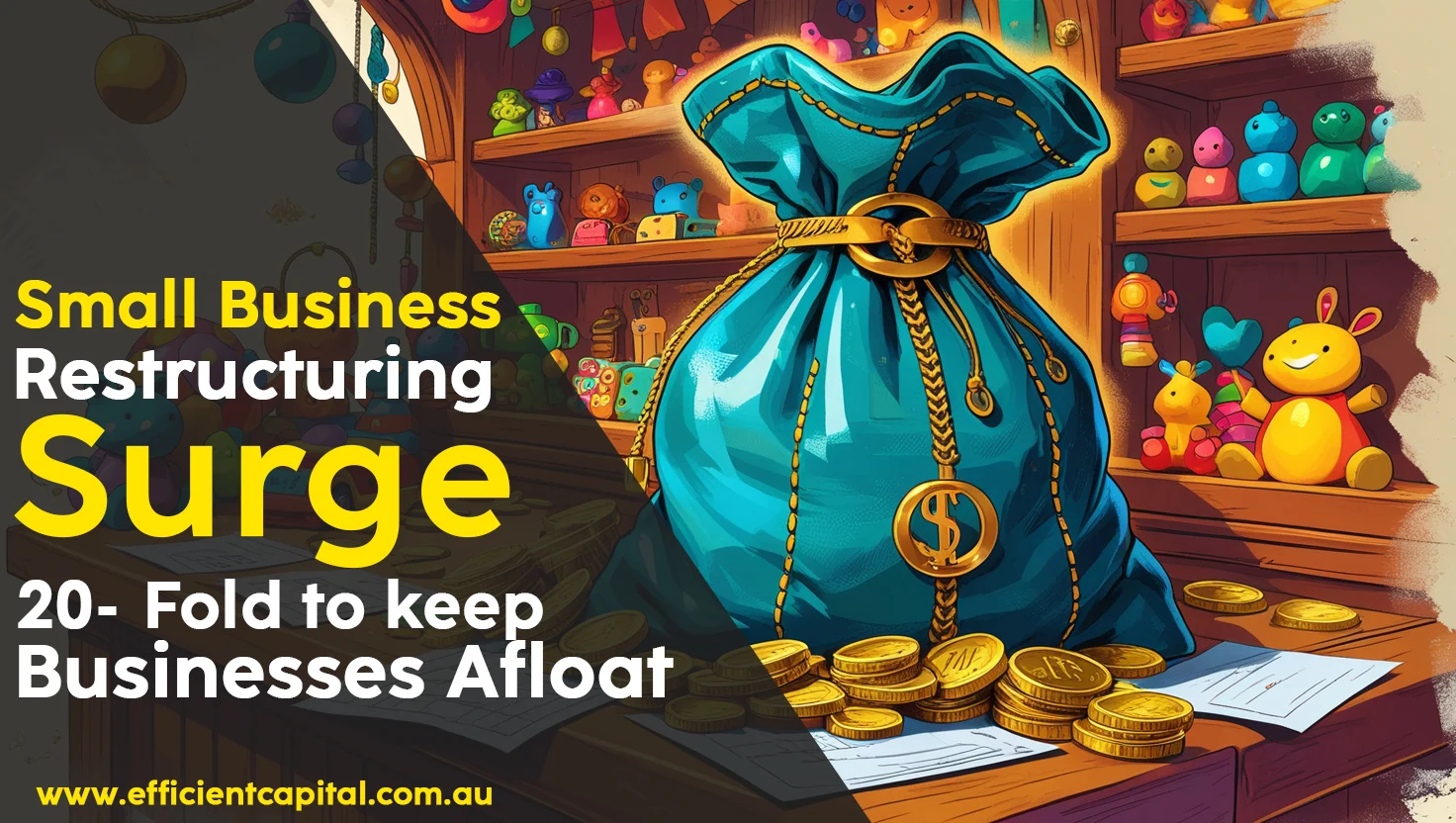
Small Business Restructurings Surge 20-Fold to Keep Businesses Afloat
In the last couple of years, Australian small businesses have faced unprecedented challenges, including economic uncertainty to rising operating costs. Luckily, a sound solution has come into being to help these firms navigate financial trouble the SBR process. Recent data show SBR appointments have risen 20-fold, which is coming to the rescue of struggling companies and enabling them to stay afloat. This blog explores the development of small business restructurings, their benefits, and how business loans and Australian small business loans can enhance this process to achieve long-term success.

The Development of Small Business Restructuring
Since its launch on January 1, 2021, the SBR regime has been developed to provide an economical and streamlined substitute to traditional insolvency actions like voluntary administration or liquidation. The intention was to help small firms deal with financial hardship but maintain directors in charge of their business. Adoption of SBR has surged since its launch. Between July 2022 and December 2024, ASIC registered 3,388 SBR appointments, a dramatic increase from the 82 appointments during the preceding 18 months to June 2022. On an annual basis, this is nearly a 20-fold increase, showing the growing reliance on this process to keep firms afloat.
Why Small Business Restructuring Works?
The SBR process itself is ideally crafted to accommodate the needs of small businesses with debts of less than $1 million. It allows directors to file a restructuring plan within 20 business days, which would be voted on by the creditors within 15 business days. On approval, the company can keep trading while settling debt under an orderly plan, with significant funds often going to the Australian Taxation Office (ATO). In fact, close to $88 million of the $101 million in dividends paid to unsecured creditors between July 2022 and December 2024 were remitted to the ATO, underscoring the process’s role in allowing companies to settle tax liabilities.
One of the key advantages of SBR is that it is affordable. Median restructuring cost across review period was $21,998, which is much lower than for standard insolvency procedures. This makes it an option for small businesses who would otherwise be unable to afford professional fees.

The Role of Small Business Loans in Restructuring
Though SBR provides a roadmap for managing existing debts, business loans and small business loans in Australia can prove to be a crucial ingredient in taking care of the business before and after restructuring. Straightforward and flexible access to funding can help your business to plug cash flow shortages, pay for operating expenses, or take advantage of investment opportunities, which are all critical to successful recovery.
These loans start at $5,000 and go up to $5 million, with turnaround times as short as 3 hours and funds in your bank account in 24 hours. Bank loans, which usually come with colossal documentation needs and collateral, are unlike most online lenders, which provide unsecured small business loans based on cash flow and business performance and not credit scores.
Using SBR with Strategic Financing
To achieve the optimal utilization of SBR, small business enterprises should include strategic financing in their restructuring strategy like:
- Bridging Cash Flow Deficits: Cash flow issues are a common issue for financially troubled companies. Small business financing can provide short-term working capital to cover operational costs so that the company can keep running during the restructuring process.
- Investing in Growth: Restructuring is not merely survival, it’s about setting the business up for growth. Business loans Australia can finance investment in marketing, equipment, or technology that will enable businesses to seize new opportunities following restructuring.
- ATO Debt Management: As 87% of SBR dividends go to the ATO, additional funds may need to be secured to service payment arrangements by companies. A small business loan could help with working capital to avoid any tax issues while not affecting the day-to-day operation of the business.
- Avoid High-Interest Debt: Some businesses rely on credit cards or high-interest loans for financing cash flow in lean times. If you can cash-flow the payment from a business loan from a competitive lender like Lumi or Moula, you could pay off the expensive debt and reduce your financial stress.
Challenges and Considerations
Even if SBR and small business loans are of enormous benefit, there are certain barriers to be considered. For instance, businesses must meet some conditions to be qualified for SBR, for instance, less than $1 million in debts, being up-to-date with current tax lodgments, and no unpaid employee entitlements. In addition, all of the creditors may not be on the same page concerning the suggested restructuring plan, and thus the procedure would be abandoned.
In seeking business loans in Australia, firms should carefully shop around for lending institutions to obtain the most favorable terms. The rate of interest charged on small business loans can also vary widely: interest rates for secured business loans range from 6.29–15% P.A., while rates for unsecured business loans will attract interest rates between 12–20% P.A., depending on the credit profile of the business. Businesses with poor credit scores and businesses that are in arrears with the ATO will attract a higher interest rate. It is therefore very important to deal with lenders that have flexible products, and have transparent pricing policies.

The Future of Small Business Restructuring
The rise in SBR appointments is a sign of heightened recognition of this process as a genuine solution rather than insolvency. With economic pressure like inflation, rising expenses, and ATO debt recovery measures still looming, the framework of SBR is also expected to gain more pace in 2025. The ATO anticipate an uptick in restructurings, particularly in industries like construction and hospitality, which are under continuous financial stress.
For small business entrepreneurs, the combination of SBR with strategic financing can be a winning path to recovery. Accessing small business loans and business loans in Australia enables companies not only to survive but thrive within the competitive landscape.
Conclusion
The 20-fold rise in small business restructurings is a testimonial to the strength of Australian SMEs and the success of the SBR regime in saving businesses. By combining this process with business loans and small business loans in Australia, business operators can cover financial needs, clear debt, and invest in long-term growth. We understand at Efficient Capital the importance of finance accessible for small businesses. Whether you’re restructuring or looking for your next step, our experienced team will help you figure out the ideal business loans to help you lead the way. Call us today to find out your options, and start your way to a better future, filled with prosperity.

